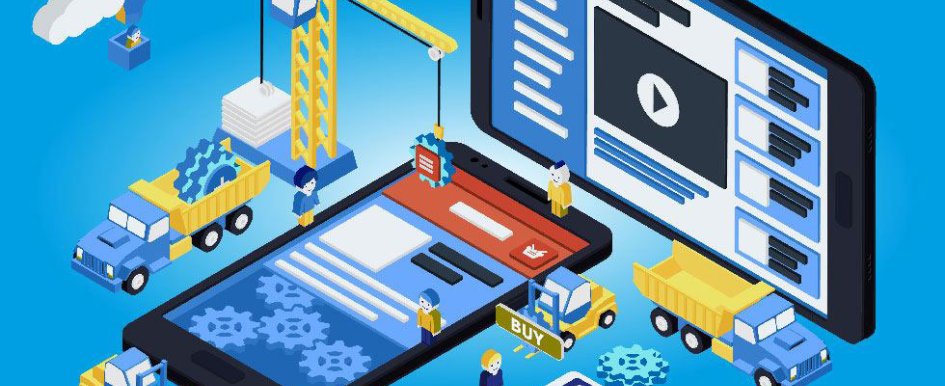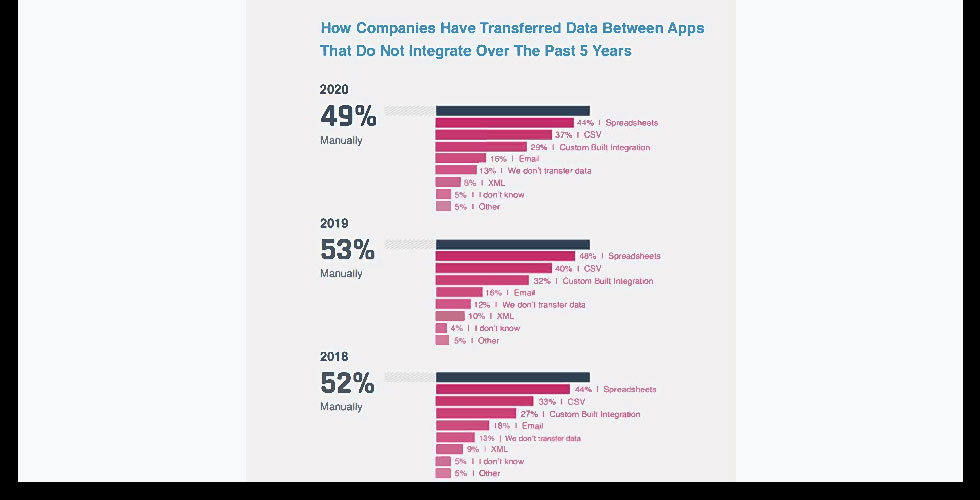
Like every other industry these days, construction businesses have been embracing digital solutions to conduct daily activities. Because of this digital transformation, application usage in the industry is steadily increasing.
But a growing tech stack doesn’t guarantee greater efficiency. Lack of integration and a growing sprawl of technological applications can create complications. A recent ConTech report by construction technology and insurance company JBKnowledge showed that most of the applications used by construction companies are poorly integrated with existing workflows. Integration between applications is crucial for the industry to reap the benefits of the digital revolution.

The Increased Use of Digital Technology in Construction
Construction companies are increasingly relying on applications and digital solutions to work. Apps save time and effort, enforce accountability and transparency and streamline workflows. The number of companies using applications (and the number of applications used) is growing year after year. The digital era has arrived in the construction industry in full force.
How are construction companies integrating digital solutions? According to the 2020 report, 22% of companies surveyed reported using six or more applications for their daily operations; 92% of construction industry workers use a smartphone for work; 49% of respondents have a dedicated IT department; and 65% of respondents also use a tablet for work purposes, and 83% use laptops.
These apps are usually accessed via cell phones or company mobile devices. According to the report, the most common uses for mobile devices in the field are:
• 65% use them to view building information modeling (BIM) — BIM is one of the most widely used technologies in construction. It provides a digital version of the project constructors can use to make adjustments before starting the work. It enables managers to see how modifications will affect the structure and control costs.
• 63% use them to view installation drawings — A mobile application is useful for construction specialists in the field to follow up with installations. They can quickly check the drawings and make necessary adjustments.
• 78% use them to view project documents — Architects and construction managers can check project documents on the go with the help of mobile applications.
• 71% use them to create project documentation and to enter times for payroll — Conducting daily reporting and time management from the site is convenient and saves time.
Chances are the company uses a separate mobile app for every activity. According to 2019 data from Statista, the top three most common activities and processes construction companies use mobile apps for are daily reporting (58.3%), photo/video (57.4%) and safety management (41.5%).
The problem arises because, for the most part, these apps don’t integrate. Since construction projects cannot stop because of poorly integrated apps, workers need to find ways to input the data collected using each tool. Companies resort to outdated and inefficient methods like manual input, spreadsheets or emails.
How Current Digital Solutions Affect Workflows
Lack of integration and growing tech sprawl are both key obstacles to success in construction today. While digitalization is meant to help companies streamline operations and workflows, the reality is that most of the data still remains in silos.
Most of the construction process is still paper-based and many companies simply digitize paper-based workflows.
At the beginning of digitalization, companies used computer-based tools for document management and drawings. While the processes became simpler, the amount of data generated with these electronic tools increased over the years. Every construction project now includes hundreds of documents. To solve this problem, construction companies turn to relational database management tools to manage workflows. However, those tools are not useful for managing unstructured data, such as project information.
Although construction sites are digitized, the use of multiple disconnected applications creates new issues. One of the most common issues of digitalization is the lack of integration between technology platforms. If the apps are not integrated, you can have multiple versions of the same document and delays trying to find the last authorized version. In addition, this causes workers to waste time manually inputting information to different applications.
Finally, this affects the data. Even when moving to web-collaboration sites, the more applications you use, the more the data becomes siloed in each application creating a need to be integrated manually.
As shown in Figure 1, almost half of construction companies still rely on spreadsheets and manual input to manage their project data. The percentage is slowly decreasing as more companies look for ways to integrate their applications into a centralized and simplified system.
Almost half of construction companies consider mobile integration extremely important when purchasing software. According to the JBKnowledge report, only 10% of companies surveyed declared that they would still purchase a software application if it had no mobile integration.
Breaking Down Silos
Why is integration important? Applications that work well together can help you save money, reduce human error and keep projects on schedule. The construction industry requires tight control of costs.
Integration can break down information silos that are so common in the industry. Automated workflows — the product of app integration — can unlock new levels of productivity and efficiency.
App integration can help with time management. For instance, an employee can enter a timesheet into an app where the hours are automatically uploaded to the project management system.
In today’s construction industry, team collaboration is critical for the success of the project. Software integration can help teams work smarter both on the jobsite and in the office. When apps integrate, it allows teams to collaborate in real time.
Integration also eliminates errors. Say you have materials being delivered to the wrong jobsite — when the apps integrate with each other, the issue can be reported in real time, allowing team members to make the necessary adjustments and promptly transfer the materials to the correct jobsite.
Integrated construction is critical to improving operational efficiency and streamlining complex workflows. Modern construction companies require strong integrations between solutions to allow a seamless flow of data. When apps are integrated, they automatically input the data into the construction management system, improve planning and enhance the efficiency of processes. As the construction industry embraces digital transformation, companies need to focus on integration more than ever.
